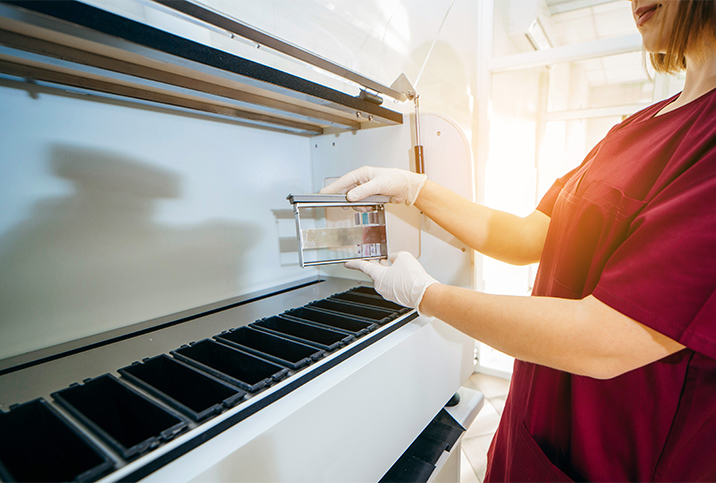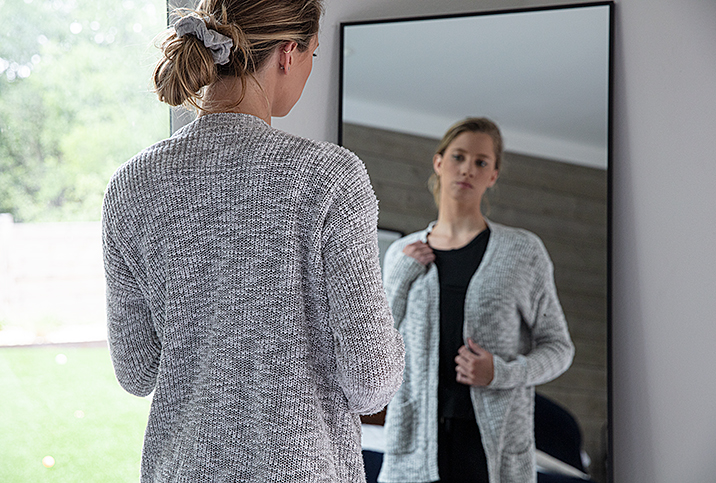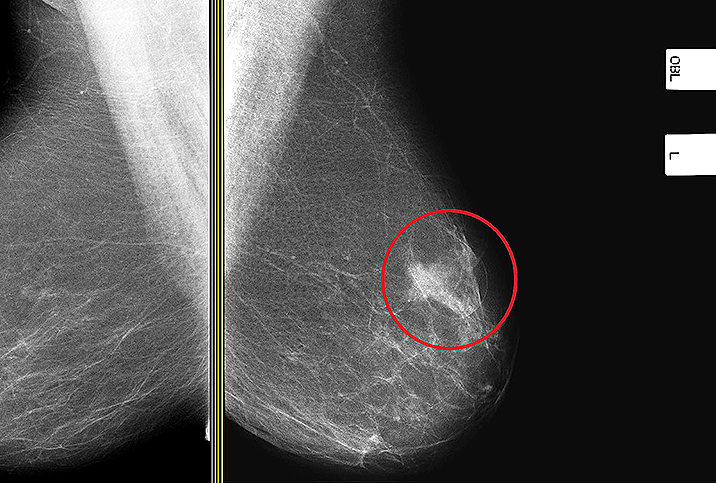How Often Are Breast Biopsies Cancer?

More than 1 million women get breast biopsies in the United States every year. It's a diagnostic procedure to check for breast cancer.
"A biopsy usually involves removing a small piece of tissue to be examined by the pathologist," explained Nancy Chan, M.D., an oncologist at NYU Langone's Perlmutter Cancer Center in New York City. The breast tissue is then analyzed to see if cancer is present.
Chan advised that a breast biopsy may be done to check a lump or mass or to follow up on findings from a mammogram or ultrasound. However, it's important to say upfront that needing a breast biopsy doesn't necessarily mean you have cancer.
When is a breast biopsy needed?
A biopsy may be used to evaluate a lump or anything unusual found during your breast health appointment, said Katie White, D.O., a breast surgeon at the Montclair Breast Center in Montclair, New Jersey.
She explained that issues of concern could include:
- New lumps
- Calcium deposits
- A fluid-filled mass (or cyst)
- Change in your breast skin
- Nipple changes or nipple discharge
White encourages women to visit their doctor annually starting at age 40 so a breast specialist can monitor their breast health and see any changes.
"If you notice a lump, change in your breast skin, or experience unusual or bloody discharge, please call a breast doctor for an evaluation," White stressed.
If an abnormality is found on a breast exam or mammogram, the next step is likely a biopsy.
Different types of breast biopsy
"There are four main types of biopsies to evaluate a breast abnormality," White said.
These include:
- Fine needle aspiration (FNA). Removes the smallest sample of tissue or fluid but does not provide as much information as the other types of biopsies.
- Core needle biopsy. Uses a local anesthetic to numb the area. A large, hollow needle then removes a thin cylinder of tissue for evaluation. This sample allows a pathologist to make a diagnosis and determine the type of breast cancer. It is the most common type of biopsy.
- Image-guided breast biopsy. This is performed by a radiologist who identifies the exact location of the area of concern through a mammogram, ultrasound or MRI and then removes the sample.
- Surgical biopsy. A patient is lightly sedated in an operating room. This type of biopsy is used when one of the other biopsy methods does not provide a clear diagnosis. It is also useful if the area of the breast is not in an ideal spot for a core needle or image-guided biopsy. During this procedure, the surgeon may remove an entire suspicious mass or take just a small sample.
"The biopsy will determine if the lump or mass in question is cancerous," Chan said.
What percentage of breast biopsies are cancer?
How often are breast biopsies cancer?
"Fortunately, most breast biopsies are not cancer," White reassured. "Around 80 percent come back as benign, not cancerous, according to the American Cancer Society."
That means 4 out of 5 breast biopsies have a benign etiology and are noncancerous, Chan added. So if you need a breast biopsy, it doesn't mean it's cancer.
However, White stressed that "breast cancer can be successfully treated if caught early. It's important women maintain their annual breast health screening appointment and know what's normal for their body."
How to prepare for a breast biopsy
It's totally understandable to be worried if you are going for a breast biopsy, but knowing what to expect can help put fears to rest. A breast radiologist will explain the type of biopsy you'll be undergoing at the time of scheduling so you'll know what to expect before your appointment, said Lori Alfonse, D.O., the deputy physician in chief at Lehigh Valley Topper Cancer Institute in Pennsylvania.
A tip from Alfonse is not to wear deodorant, which can show up on imaging and complicate the biopsy procedure.
Chan added there is usually not a lot of preparation needed for a breast biopsy. Often, only the local area is numbed (local anesthesia), which means you will be awake and not sedated.
However, Chan offered these additional tips, especially pertinent if you are undergoing a surgical biopsy:
- If general anesthesia is needed, then patients cannot eat or drink for some time before surgery—definitely check with your surgical team for specific timing.
- You should disclose all medications, such as blood thinners, to the surgical team. The team will advise you on any necessary changes to your medication routine.
- Tell your surgical team about any allergies to medications, previous reactions to latex or previous complications to surgical procedures.
- Ensure the surgical team is aware of other medical issues, such as heart conditions, clotting or bleeding disorders, or diabetes.
- If a sedative or general anesthesia is involved, patients should not drive and will need to be escorted home by someone. Arrange rides ahead of time so you can get home safely in a timely fashion.
- Await the medical team to follow up on the result of the biopsy. It may take a few days. Other, more specific tests may take a few weeks to get results.
White added that it's good to try to relax. "You are already being proactive about your breast health by maintaining your annual appointment or coming in because you noticed something different," she said.
"The advice I give the women in my life is simple: See a breast doctor annually and make sure you get a breast MRI if you are at high-risk or your doctor recommends one," White advised.
"Breast cancer is the most common cancer in women in the United States, but it is easily treatable if caught early," she continued. "Breast MRI is the most sensitive test available and provides extremely valuable information on high-risk women."


















